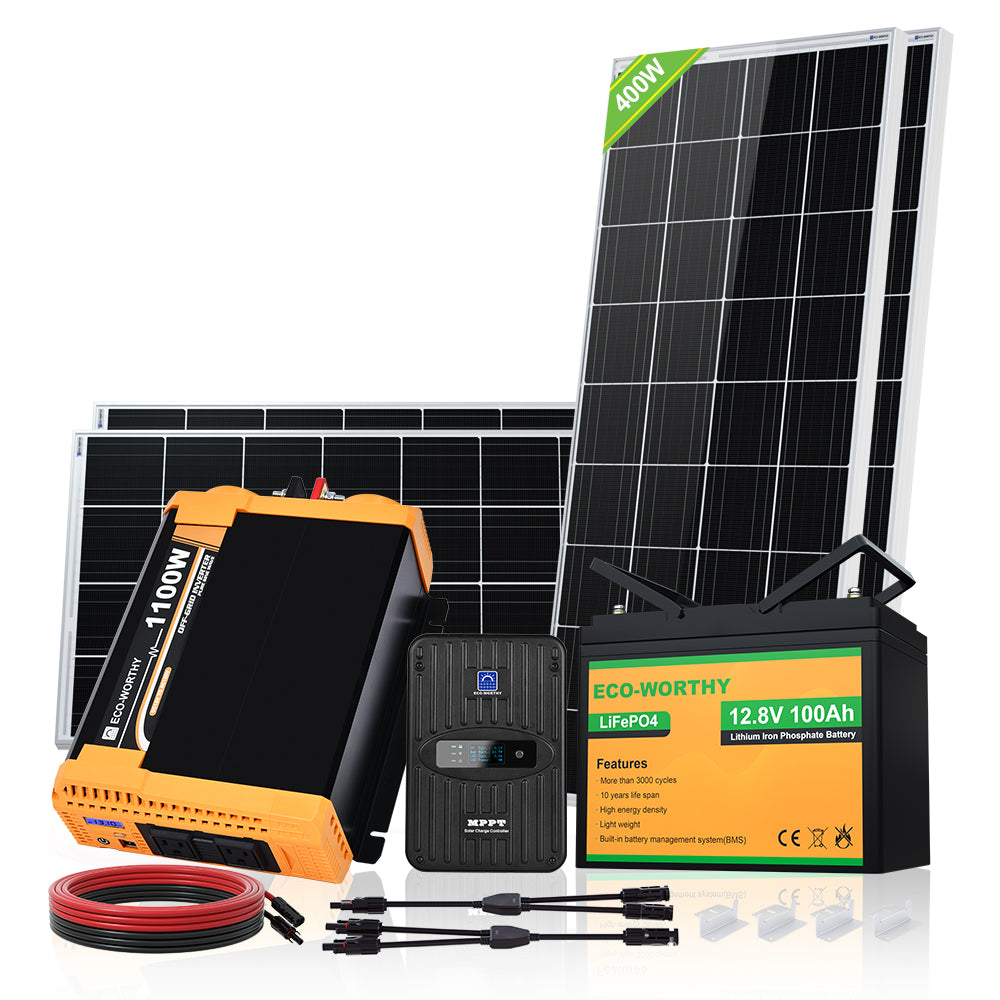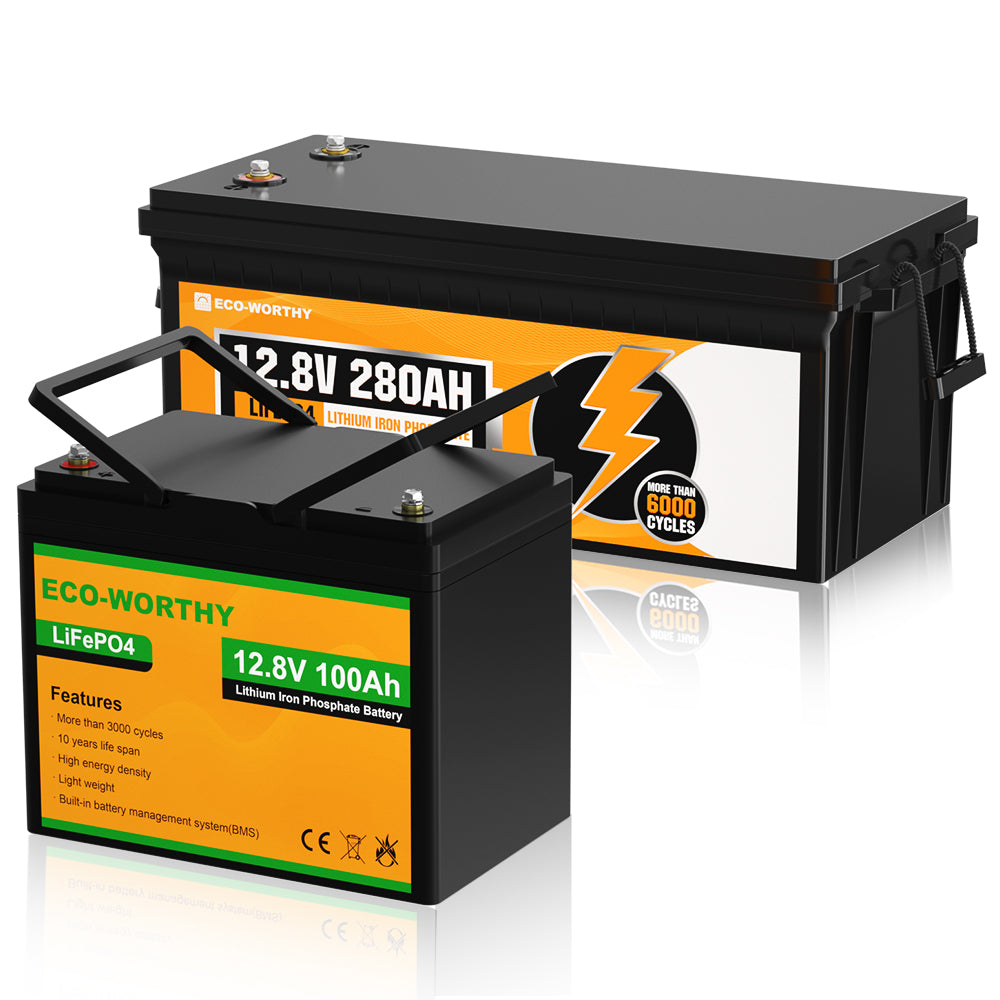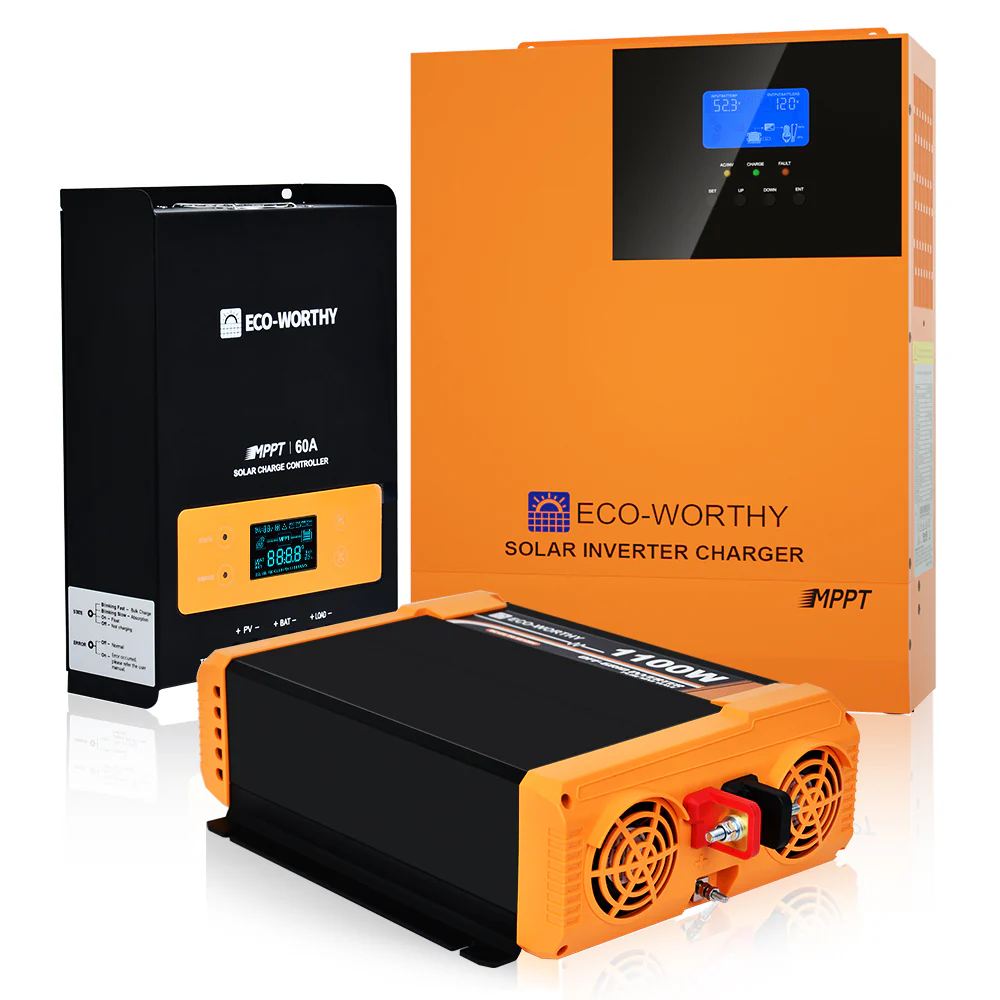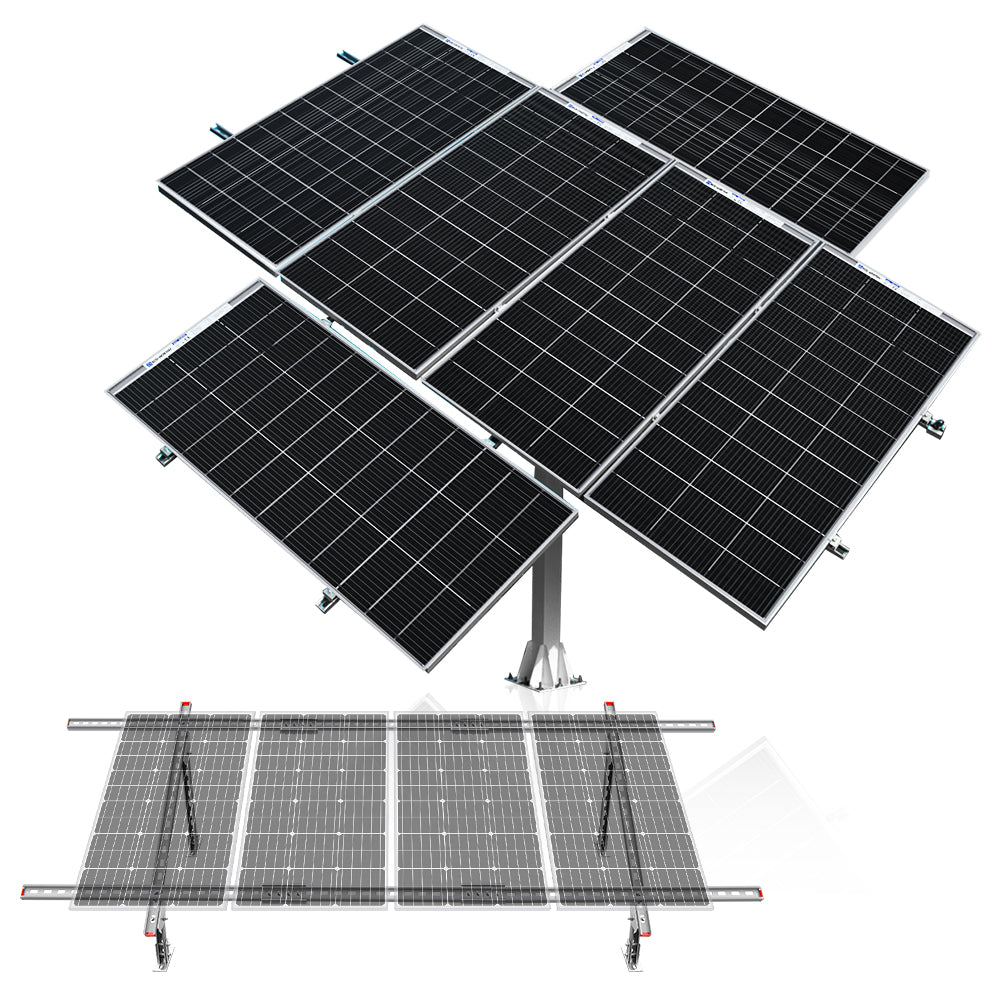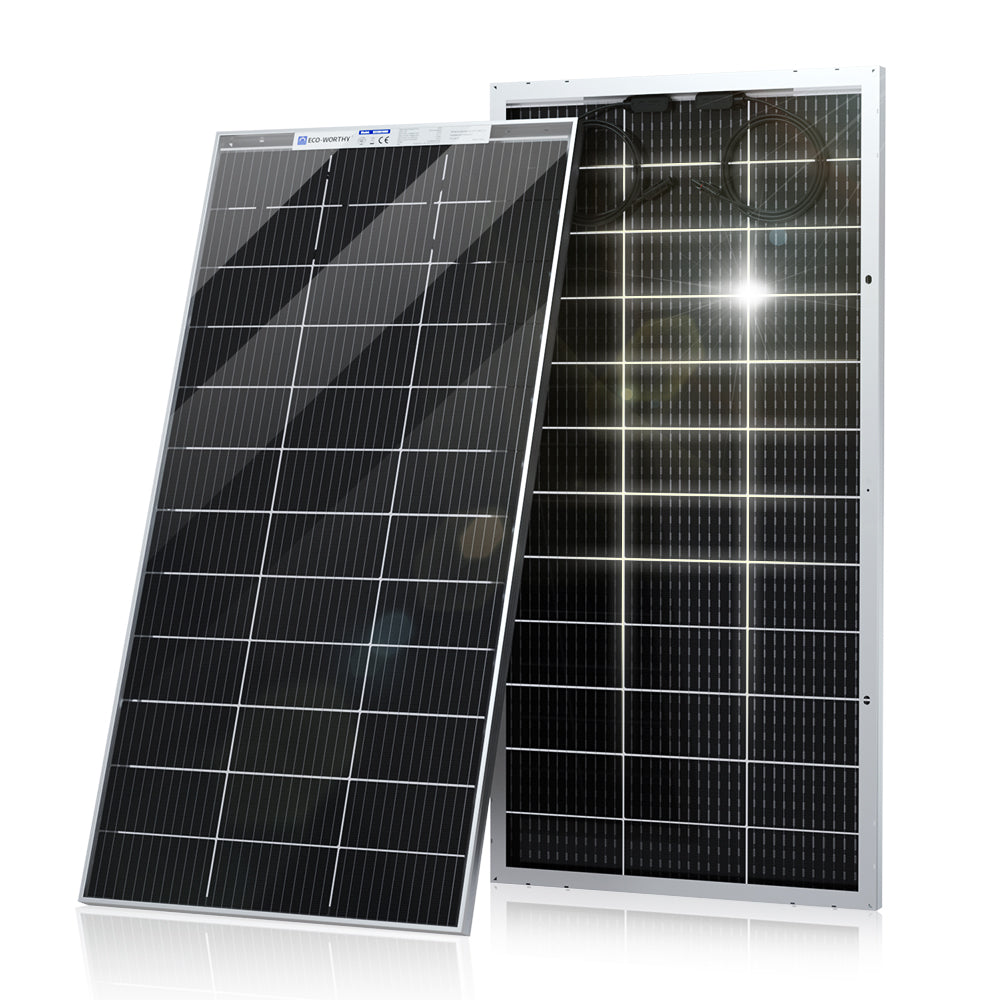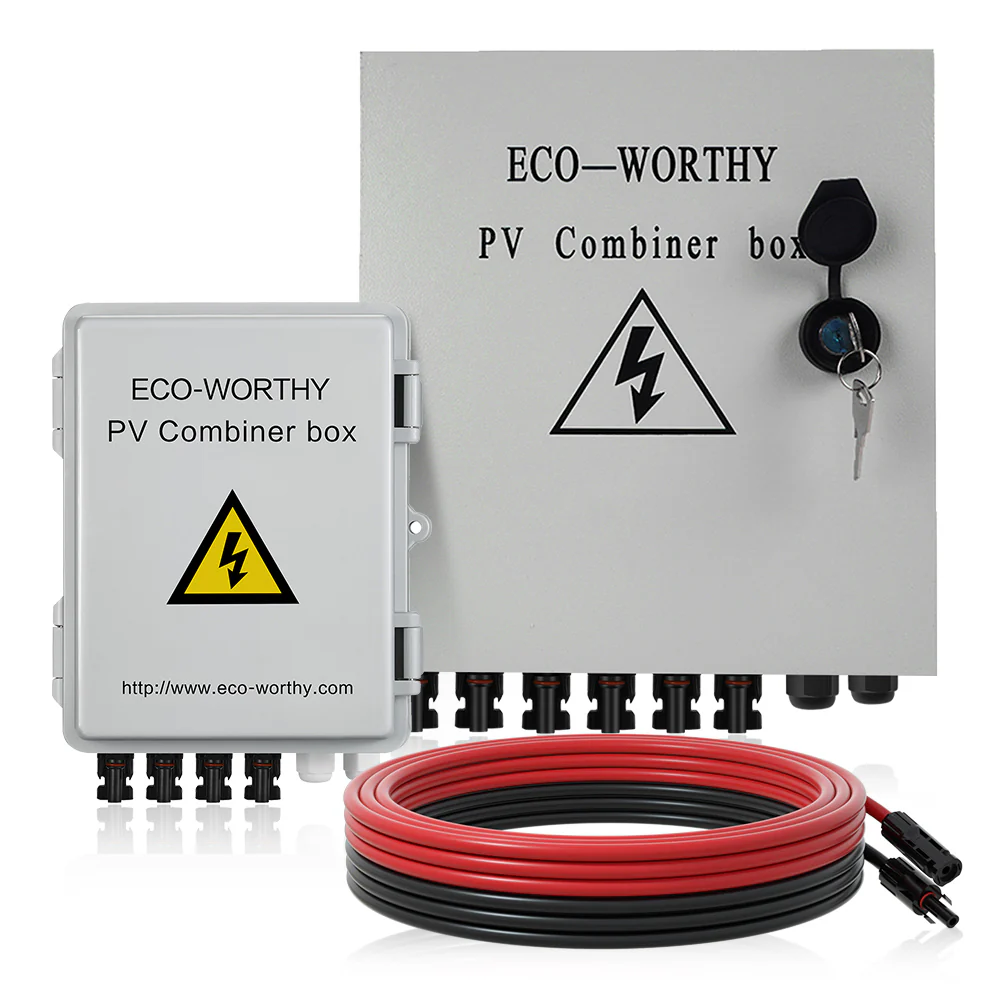System Installation Guide: Off Grid Inverter Connection
1. Connect the off grid inverter to the battery(Polarity '+" to "+","-" to "-").
2. Connect the AC load to the output port of the inverter (If you have many appliances, please just plug the AC socket to the inverter).
3. Turn on the inverter when the battery is full charged, then the system starts working.
Note: pay attention to the polarity, please make sure to connect the right polarity to the controller and the inverter. Otherwise, the controller and the inverter will be burnt out.
The inverter is like your solar system’s brain. It manages your power flow, controlling two kinds of power.
DC—or direct current—power is the kind stored in batteries. It’s also the kind produced by solar panels.
But you can’t use DC power (directly) to power anything in your home. That’s where your inverter comes in.
Everything in your home uses AC—or alternating current—power. And an inverter takes DC power from your panels (or from batteries) and turns it into AC so it can be used for your fridge, lights, TV, and other household appliances.
Here’s how it works: your solar panels feed DC power into the batteries. Then your inverter takes that power and “inverts” it, creating AC power for your home. This works essentially like a miniature power grid.
How to Pick the Best Off-Grid Inverter
1. Think About Size
The first thing to think about is how much power you need.
Fortunately, sizing off-grid inverters is straightforward if you know what appliances you’re going to use.
Add up the wattage of all your lights and appliances to calculate the number of watts you’d need if everything was used all at once. (No, you’re not likely going to use everything, but this is an easy way to be safe.)
Don’t forget to consider the voltage—although most appliances run on 120Vac, some appliances, such as well pumps, require 240Vac. Example: Let’s say you need 1,000 watts for your fridge, 500 watts for lights, and 200 watts for your phone & TV. That adds up to 1,700 watts. In this case, we’d suggest a minimum inverter size of at least 2,000 watts to give you a little extra headroom. (After all, you may add appliances in the future.)

2. Consider Pure Sine Wave Instead of Modified Sine Wave
You may hear some manufacturers talk about pure sine wave inverters. You don’t need to understand exactly how these work—it’s enough to know that the power that’s put out by a pure sine wave inverter is “cleaner” than what you’d get from a modified sine wave inverter.
Pure sine wave inverters deliver higher quality power output, similar to (or better than) our power grid. Modified sine wave inverters are cheaper, but they deliver lower-quality power output.
For this reason, modified sine wave inverters can cause issues with certain appliances. Motors, pumps and compressors run hotter and wear out more quickly. Certain sensitive appliances like computers can be damaged, or they may not work at all. These inverters also typically cause background noise on a stereo, and reduced video and audio quality for certain TVs.
That’s why we don’t recommend modified sine wave inverters for most applications; most of our off-grid customers are use pure sine wave inverters to avoid these potential issues.


